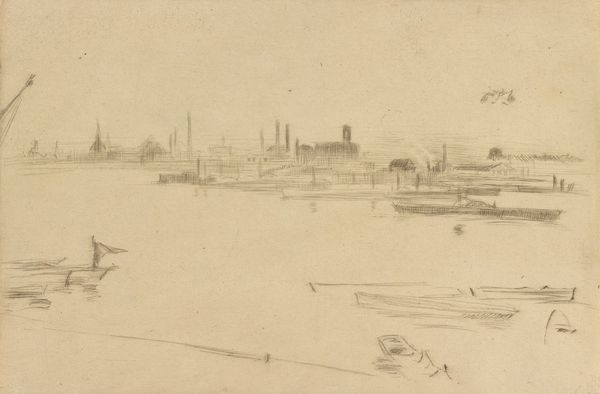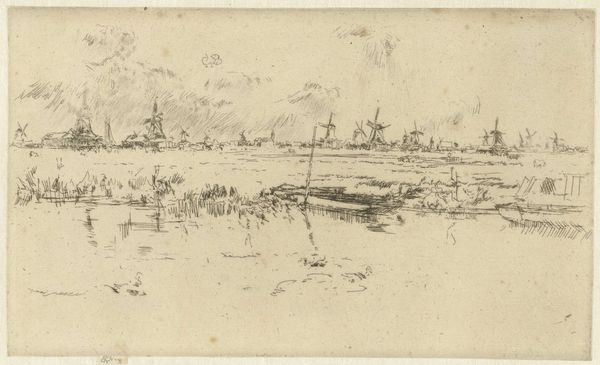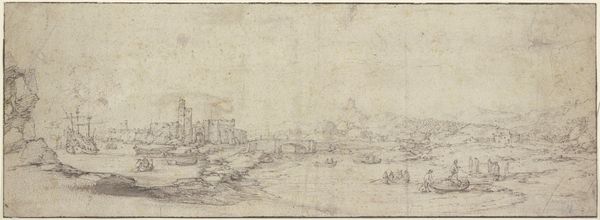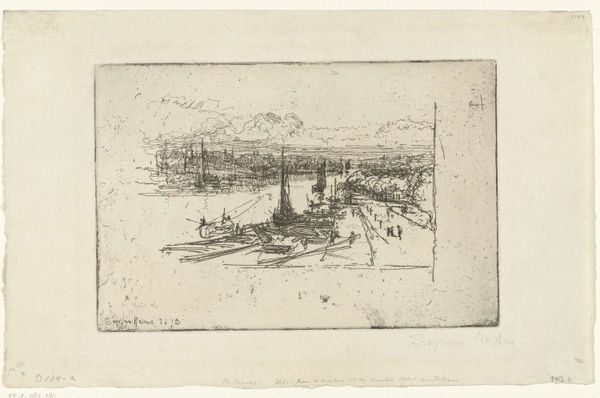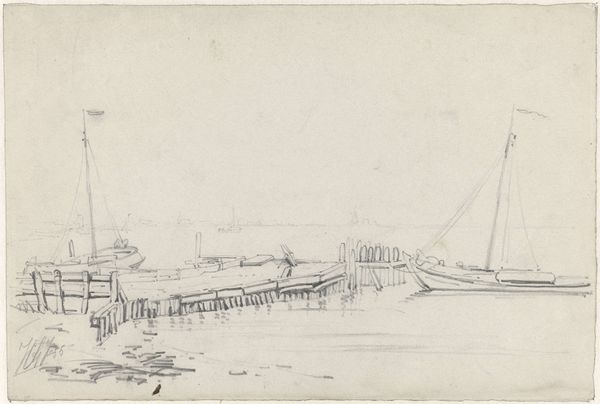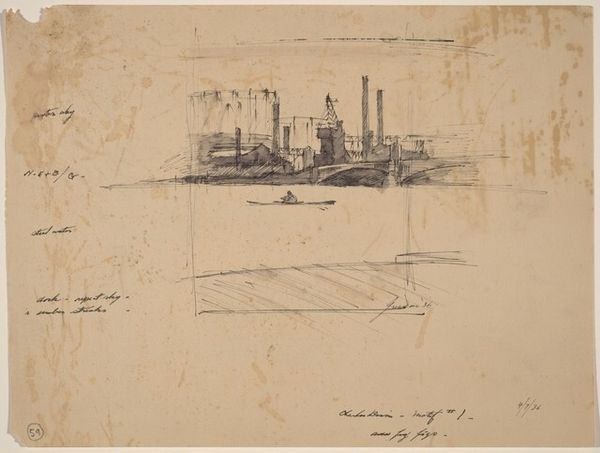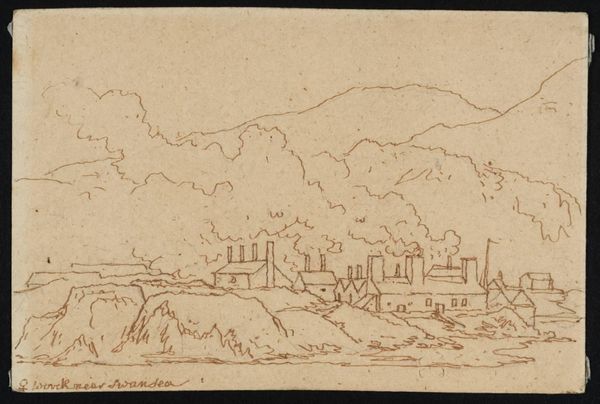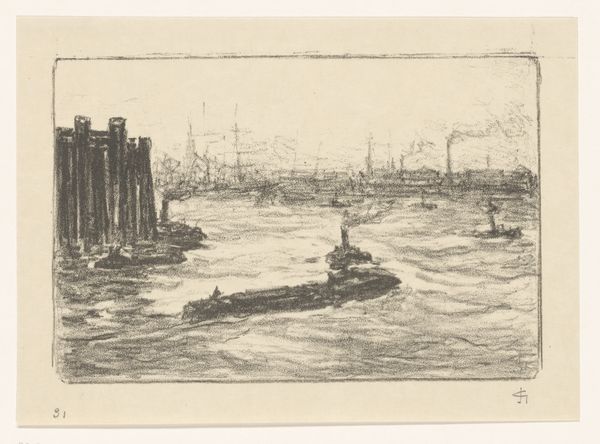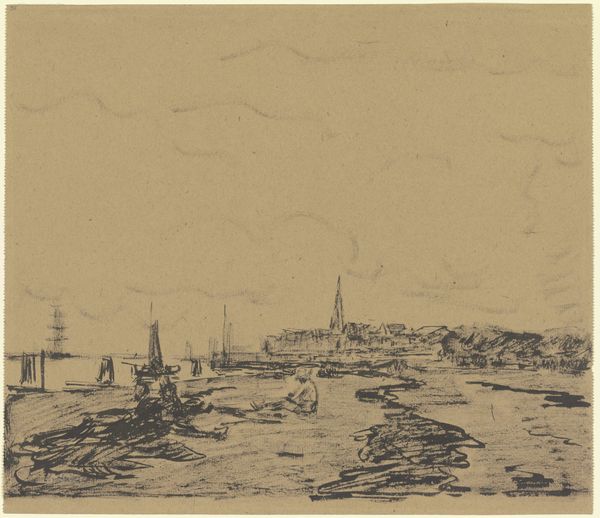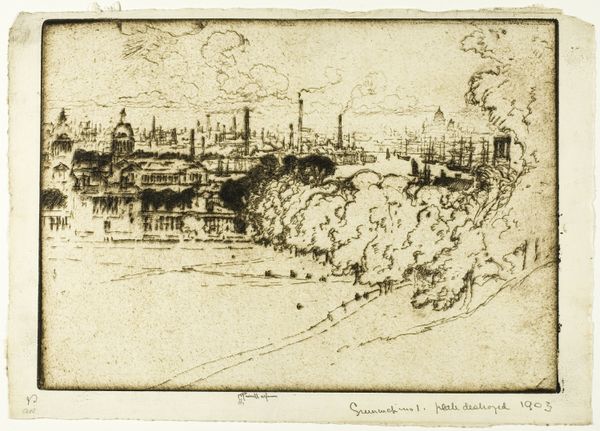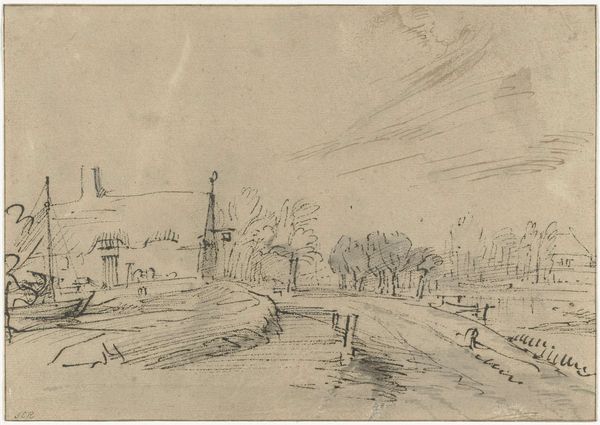
Dimensions: support: 80 x 109 mm
Copyright: CC-BY-NC-ND 4.0 DEED, Photo: Tate
Curator: This is Philip James De Loutherbourg’s “Fforest Copper Works, Clase,” a small drawing held at the Tate. Editor: It’s surprisingly evocative. The sepia tones and sketchy lines lend it a kind of melancholic industrial romance. Curator: De Loutherbourg was fascinated by industry and technology, mirroring the changing social landscape. The copper works stand as testaments to a burgeoning era of progress. Editor: Progress, yes, but at what cost? The smokestacks hint at the pollution, the exploitation of land and labor that fuelled this so-called advancement. Curator: True, but the artist isn't necessarily celebrating industrialization. It could be read as a record of the changing world. Editor: Perhaps. But as we consider it today, we’re forced to reflect on the long shadow these industrial sites cast on our environment. Curator: Indeed. This drawing invites us to consider the complex relationship between industry, society, and the environment. Editor: It’s a somber reminder that progress isn't always progress for everyone.
Comments
tate 8 months ago
⋮
http://www.tate.org.uk/art/artworks/de-loutherbourg-fforest-copper-works-clase-d36383
Join the conversation
Join millions of artists and users on Artera today and experience the ultimate creative platform.
tate 8 months ago
⋮
This drawing comes from a group of designs by de Loutherbourg originally owned by Turner. Other drawings from this group are shown nearby. They all show Turner exploring the picturesque potential of the industrial landscapes of Shropshire and Wales. Such industrialised areas were popular with tourists. Travellers came to wonder at the achievements of modern industry, and enjoy the sublimity of the landscape. The French-born de Loutherbourg came to London to work as a theatre designer. He was a successful and highly versatile artist, especially famous for his exploration of theatrical light effects. Gallery label, September 2004

